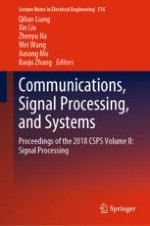2020 | Book
Communications, Signal Processing, and Systems
Proceedings of the 2018 CSPS Volume II: Signal Processing
Editors: Qilian Liang, Xin Liu, Dr. Zhenyu Na, Prof. Wei Wang, Jiasong Mu, Baoju Zhang
Publisher: Springer Singapore
Book Series : Lecture Notes in Electrical Engineering
